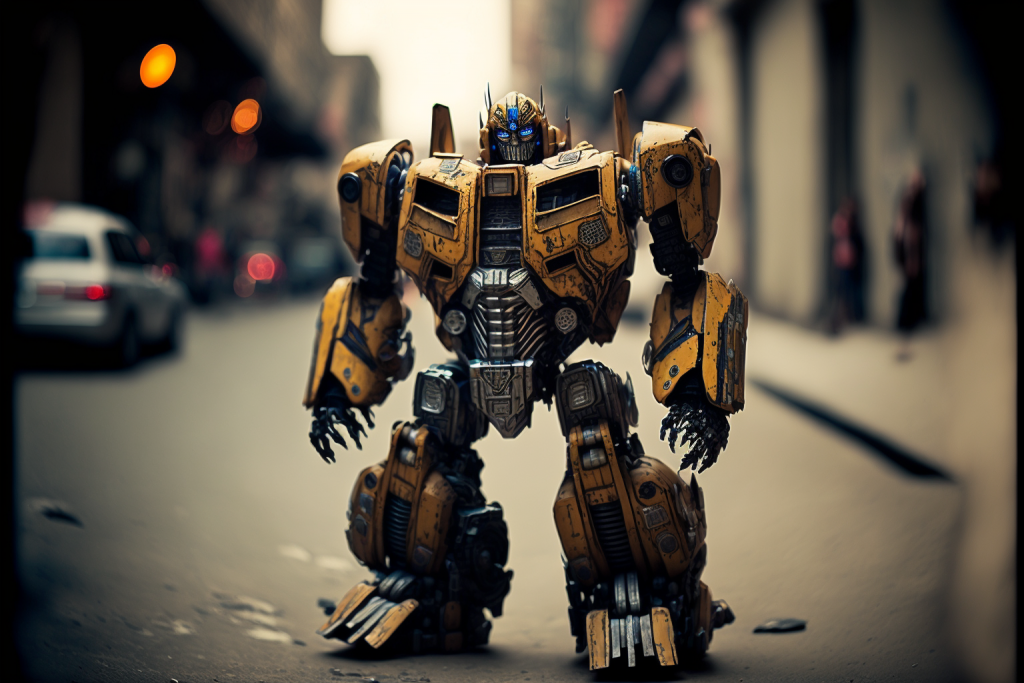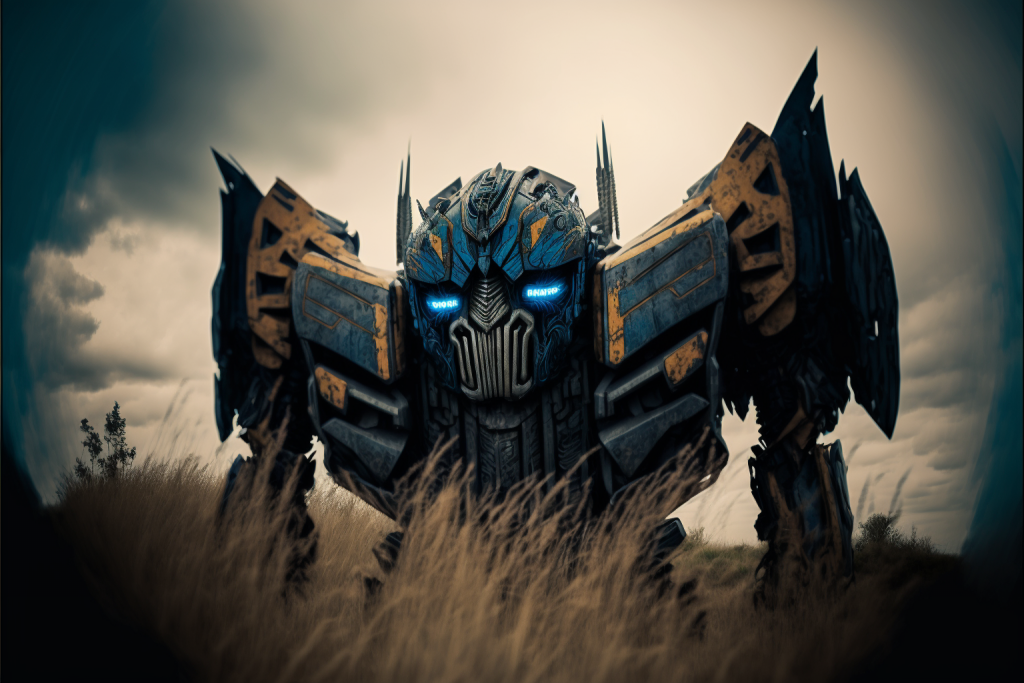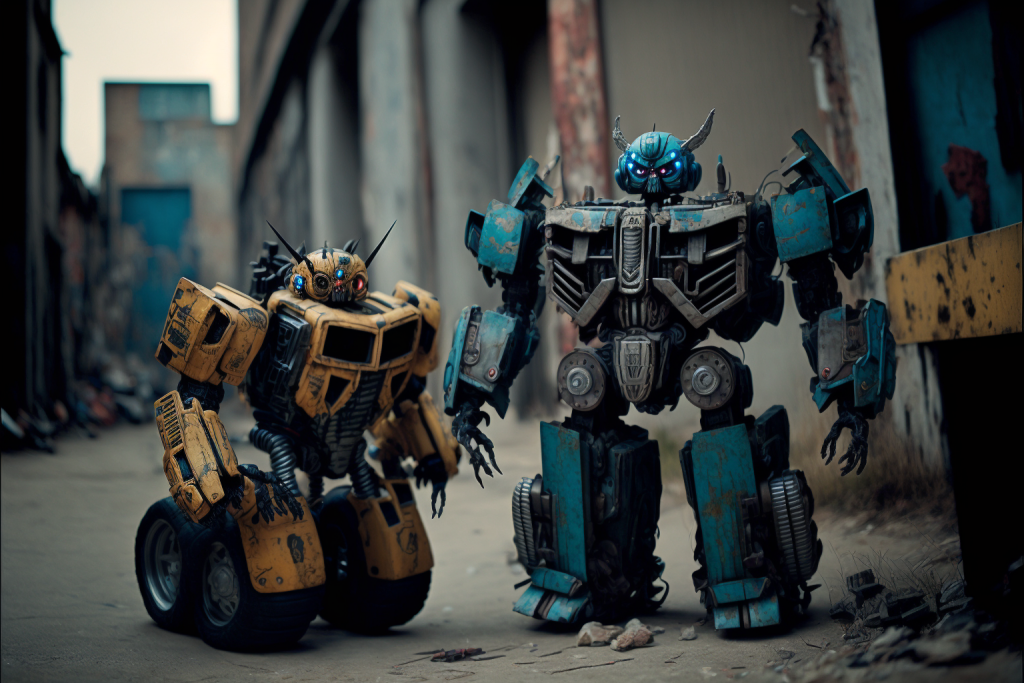The Transformers franchise has been captivating audiences for over a decade with its epic battles between the Autobots and Decepticons. With advanced special effects and cutting-edge technology, the films have brought the robots in disguise to life in ways we never thought possible. But what if we could take it one step further and use artificial intelligence to generate images of iconic scenes from the movies?

Enter diffusion networks, a type of generative AI model that has been used to generate images of everything from celebrities to landscapes. By training a diffusion network on images from the Transformers films, we can now see what some of our favourite scenes would look like in stunning detail.
Since their inception in the early 1980s, Transformers have become a global phenomenon, capturing the imagination of millions of fans around the world. What began as a toy line has evolved into an expansive franchise, spanning various forms of media, including television, movies, comics, and video games. This blog article delves into the rich history of the Transformers franchise, exploring its origins, successes, and enduring appeal.
The Birth of Transformers
The story of the Transformers franchise begins in the early 1980s, when American toy company Hasbro partnered with Japanese toy company Takara Tomy. Combining Takara Tomy’s Diaclone and Micro Change toy lines, Hasbro created the Transformers, a series of action figures that could change from robots to vehicles, animals, or other forms.
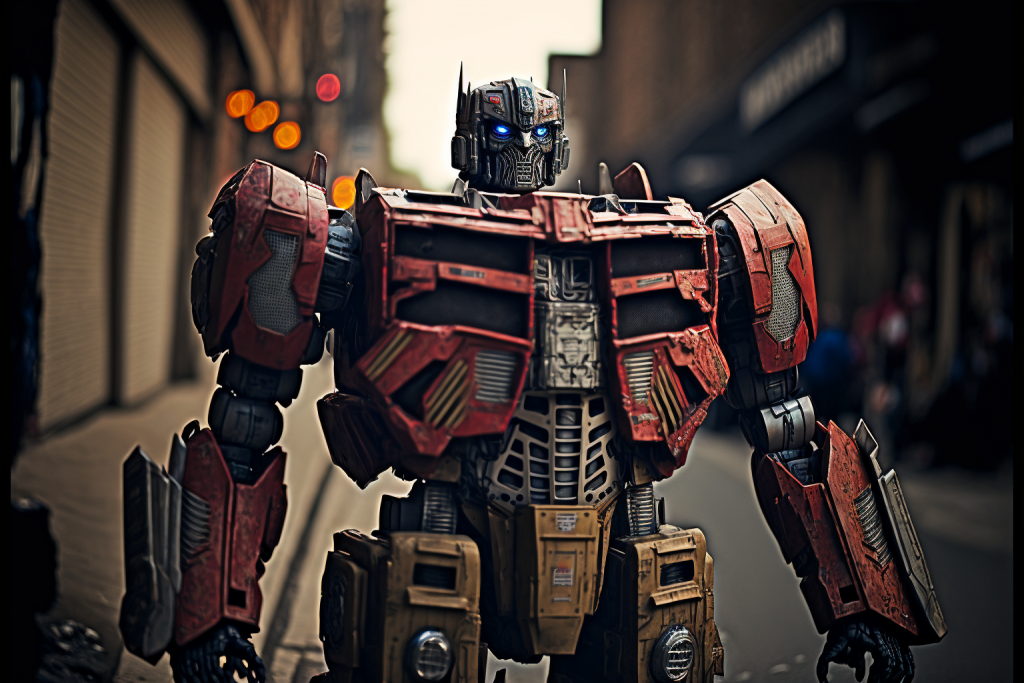
Transformers made their debut in 1984, accompanied by a Marvel comic book series and a television show, “The Transformers,” which would run for four seasons. The comic book and television show introduced fans to the Autobots, led by the heroic Optimus Prime, and the Decepticons, led by the villainous Megatron. Both factions of robots hailed from the distant planet of Cybertron and crash-landed on Earth, where they continued their battle for control of the universe.
Transformers in the ’80s and ’90s
Throughout the 1980s, the Transformers franchise enjoyed immense popularity. As the toy line expanded, so did the comic book series and television show, introducing new characters and storylines. The Transformers: The Movie, a full-length animated film, premiered in 1986, featuring the voice talents of Peter Cullen as Optimus Prime and Frank Welker as Megatron, as well as Orson Welles, Leonard Nimoy, and Judd Nelson.
While the popularity of the Transformers began to wane in the early 1990s, Hasbro continued to release new toy lines, such as Generation 2 and Beast Wars. Beast Wars, in particular, breathed new life into the franchise, with its own successful television series running from 1996 to 1999. This computer-animated show introduced a new generation of fans to the world of the Transformers, setting the stage for the franchise’s resurgence in the new millennium.
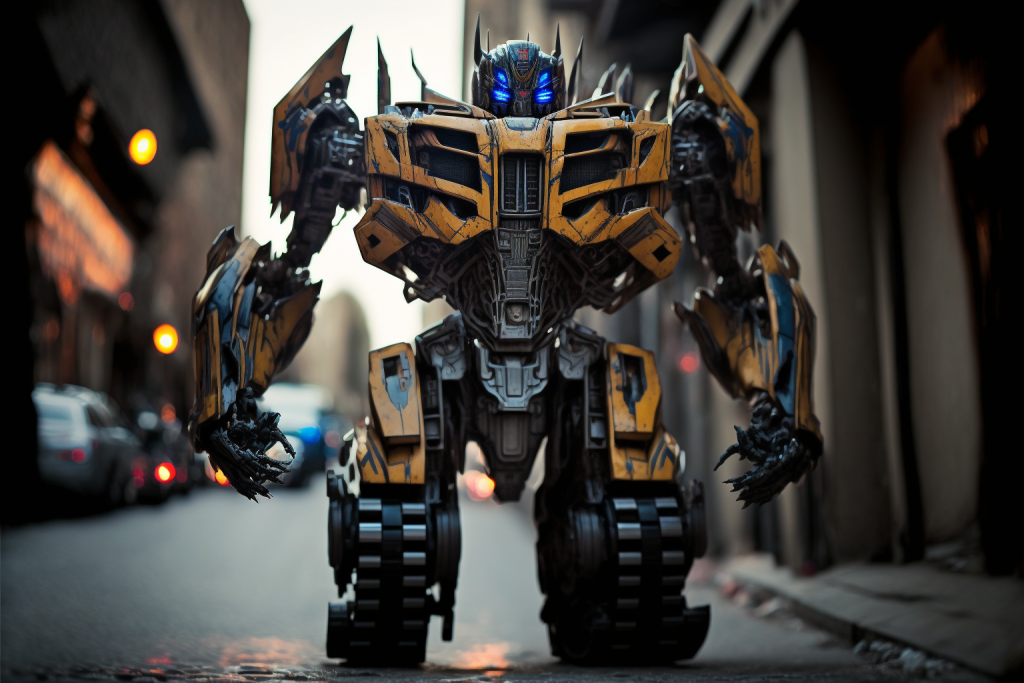
The Live-Action Era
In 2007, the Transformers franchise experienced a massive resurgence with the release of the first live-action film, directed by Michael Bay and produced by Steven Spielberg. The film starred Shia LaBeouf, Megan Fox, and a host of well-known actors providing voices for the Transformers, including Peter Cullen reprising his role as Optimus Prime. The movie was a box office hit, grossing over $700 million worldwide and spawning multiple sequels.
These live-action films introduced the world of the Transformers to a broader audience, drawing in new fans while rekindling the love of longtime followers. However, the films also faced criticism for their heavy reliance on action and special effects, often at the expense of character development and story depth. Despite these criticisms, the films have continued to be commercially successful.
The Expanding Universe
Throughout the years, the Transformers franchise has ventured into various forms of media beyond toys, television, and movies. Numerous comic book series have been published by Marvel, Dreamwave Productions, and IDW Publishing, expanding the Transformers universe and exploring the rich lore of the characters.
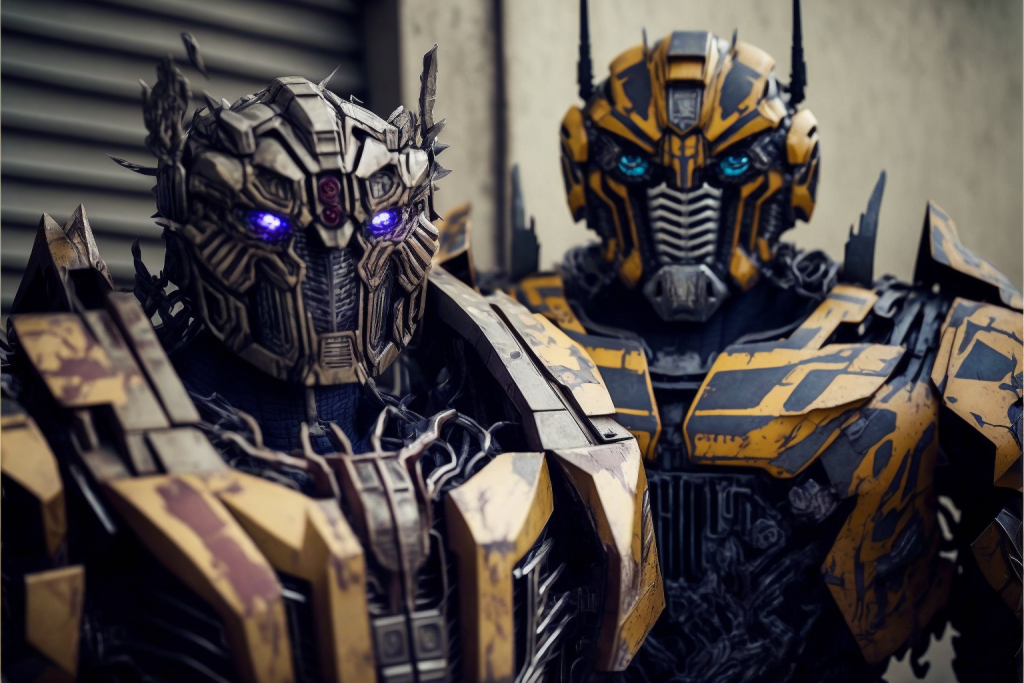
Video games have also played a significant role in the franchise’s success, with titles spanning multiple platforms and genres. Games such as Transformers: War for Cybertron and Transformers: Fall of Cybertron have been particularly well-received, offering fans an immersive experience and deep exploration of the Transformers’ world.
In recent years, the Transformers franchise has returned to television, with animated series like Transformers: Prime and Transformers: Cyberverse appealing to younger audiences. These shows have continued the tradition of developing engaging storylines and introducing new characters while paying homage to the original generation of Transformers.

The Enduring Legacy of Transformers
Over the past four decades, the Transformers franchise has evolved and adapted to changing times and audience preferences, ensuring its continued relevance and success. The enduring appeal of the Transformers can be attributed to several factors:
- Nostalgia: Many fans of the original 1980s toys, comic books, and television show have passed their love for the franchise onto their children, creating a multi-generational fanbase.
- Iconic Characters: Characters like Optimus Prime, Megatron, Bumblebee, and Starscream have become cultural icons, resonating with audiences due to their memorable designs, personalities, and story arcs.
- Innovation: The Transformers’ unique concept of robots in disguise, capable of changing forms, has kept the franchise fresh and exciting, as new toy lines, characters, and transformations continue to be introduced.
- Storytelling: The Transformers universe boasts a rich and expansive lore, providing endless opportunities for storytelling across various media platforms, including television, movies, comic books, and video games.

Conclusion
From its humble beginnings as a toy line in the early 1980s to its current status as a multimedia empire, the Transformers franchise has captivated audiences with its innovative concept, memorable characters, and engaging storylines. The enduring appeal of the Transformers is a testament to the power of imagination and the ability of a franchise to adapt and evolve over time. As the Transformers continue to transform and roll out, fans can look forward to new adventures, characters, and stories in the years to come.
Full Collection Here:


